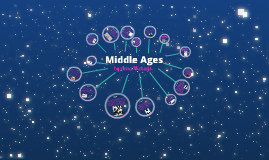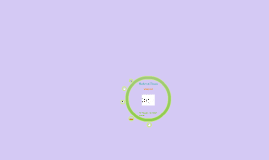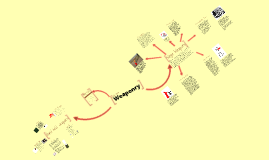middle ages
Transcript: Middle Ages sources: 1.Inventions in the Middle Ages. (n.d.). Middle Ages. Retrieved October 11, 2012, from http://www.middle-ages.org.uk/inventions-in-the-middle-ages.htm 2.Ross, C. (n.d.). China - Gunpowder. Welcome to Four Rivers Charter Public School. Retrieved October 11, 2012, from http://fourriverscharter.org/projects/Inventions 3.Middle Ages History. (n.d.). Middle Ages. Retrieved October 11, 2012, from http://www.middle-ages.org.uk/middle-ages-history.htm 4.Black Death. (n.d.). Middle Ages. Retrieved October 11, 2012, from http://www.middle-ages.org.uk/black-death.htm 5.How did the eyeglasses made an impact on our society ever since it was invented? - Yahoo! Answers. (n.d.). Yahoo! Answers - Home. Retrieved October 11, 2012, from http://answers.yahoo.com/question/index?qid=1006060126563 6.Glasses - Wikipedia, the free encyclopedia. (n.d.). Wikipedia, the free encyclopedia. Retrieved October 11, 2012, from http://en.wikipedia.org/wiki/Glasses 7.Review of Clocks and Culture. (n.d.). Technology and Society Book Reviews index page. Retrieved October 11, 2012, from http://www.techsoc.com/clocks.htm 8.Four Inventions of Ancient China: Paper Making, Gunpowder, Printing, Compass. (n.d.). China Travel Agency with 24/7 Tour Service - TravelChinaGuide. Retrieved October 11, 2012, from http://www.travelchinaguide.com/intro/focus/inventions 9.How did the invention of paper impact the economy. (n.d.). The Q&A wiki. Retrieved October 11, 2012, from http://wiki.answers.com/Q/How_did_the_invent 10.How did the invention of paper effect society. (n.d.). The Q&A wiki. Retrieved October 11, 2012, from http://wiki.answers.com/Q/How_did_the_i 11.Research The Use of Hindu-Arabic Numerals Aids Mathematicians and Stimulates Commerce | BookRags.com. (n.d.). BookRags.com | Homework Help, Book Summaries, Study Guides, Essays, Lesson Plans, & Educational Resources. Retrieved October 12, 2012, from http://www.bookrags.com/research/the-use-of-hindu-arabic-numerals-ai-scit-02123/ 12.The Printing Press. (n.d.). The History Guide -- Main. Retrieved October 12, 2012, from http://www.historyguide.org/intellect/press.html 13.How did the compass impact history? How is it used today? - Yahoo! Answers. (n.d.). Yahoo! Answers - Home. Retrieved October 12, 2012, from http://answers.yahoo.com/question/index?qid=20091121075540AAeWHiA Research The Use of Hindu-Arabic Numerals Aids Mathematicians and Stimulates Commerce | BookRags.com. (n.d.). BookRags.com | Homework Help, Book Summaries, Study Guides, Essays, Lesson Plans, & Educational Resources. Retrieved October 12, 2012, from http://www.bookrags.com/research/the-use-of-hindu-arabic-numerals-ai-scit-02123/ 14.James, V. (n.d.). The Impact of the Astrolabe | eHow.com. eHow | How to Videos, Articles & More - Discover the expert in you. | eHow.com. Retrieved October 12, 2012, from http://www.ehow.com/info_8789654_impact-astrolabe.html sources (continued...) 15.Bose, D. (n.d.). Inventions of the Industrial Revolution. Buzzle. Retrieved October 12, 2012, from http://www.buzzle.com/articles/inventions-of-the-industrial-revolution.html 16.Miller, A. (n.d.). Economic Effects of Windmills | eHow.com. eHow | How to Videos, Articles & More - Discover the expert in you. | eHow.com. Retrieved October 12, 2012, from http://www.ehow.com/list_6861085_economic-effects-windmills.html 17.Why do horses need to wear horseshoes. (n.d.). The Q&A wiki. Retrieved October 12, 2012, from http://wiki.answers.com/Q/Why_do_horses_need 18.Wyley , S. F. (n.d.). Siege Warefare, The Art of Attack and Defence. Angelfire: Welcome to Angelfire. Retrieved October 12, 2012, from http://www.angelfire.com/wy/svenskildbi 19.Bellis, M. (n.d.). The History of Eye Glasses or Spectacles - Contact Lenses. Inventors. Retrieved October 15, 2012, from http://inventors.about.com/od/gstartinvent 20.Who Invented The Clock ?. (n.d.). TimeKeepingSite History. Retrieved October 15, 2012, from http://www.timekeepingsite.org/clock_invent.html 21.paper inventor . (n.d.). Secrets of the World - Children Encyclopedia . Retrieved October 15, 2012, from http://www.worldstory.net/en/paper.html 22.blos. (n.d.). Hindu–Arabic numeral system - Wikipedia, the free encyclopedia. Wikipedia, the free encyclopedia. Retrieved October 15, 2012, from http://en.wikipedia.org/wiki/Hindu%E2%80%93Arabic_numeral_system 23.Bellis, M. (n.d.). Johannes Gutenberg - Printing Press. Inventors. Retrieved October 16, 2012, from http://inventors.about.com/od/gstartinventors 24.Bellis, M. (n.d.). History of the Compass. Inventors. Retrieved October 16, 2012, from http://inventors.about.com/od/cstartinventions/a 25.Astrolabe. (n.d.). Universe Today — Space and astronomy news. Retrieved October 16, 2012, from http://www.universetoday.com/41624/astrolabe 26.century, t. s., Buckminster, T., Dade, J., century, G. F., bestsellers, E. a., 400., et al. (n.d.). Almanac - Wikipedia, the free encyclopedia. Wikipedia, the free encyclopedia. Retrieved October 16, 2012, from

















